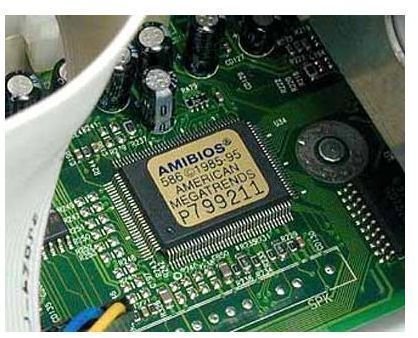Learn about the Difference Between RAM and ROM
What is ROM?
Most computing devices will not work without Read Only Memory (ROM). Everything from calculators to media players to computers, chips called ROM with built-in programs are used to accept user input, make display graphics, and access disks. ROM chips are useful because they are non-volatile, meaning that the information they contain does not depend on having power applied. ROM allows computers to start up even after they have lost power. Like most electronic components, ROM on a computer or other device can become damaged, usually resulting in the failure of the device.
In a computer, the basic input and output system (BIOS) is stored in ROM, allowing the computer to recognize hard disks, RAM, I/O ports and peripherals when it is turned on. Once the BIOS information is read, the computer can then begin to load the operating system so the computer is usable. This kind of program is called firmware and is found on motherboards, hard drives, graphics adapters, printers and more. In each case, the firmware configures the device and then communicates to the computer that the device is present and operational.
Originally, ROM chips were unchangeable once data were written to them. Now most devices have programmable ROM chips that can be erased and updated with new firmware using special update programs. This makes it possible for users to upgrade firmware to give devices new features rather than having to replace the entire device.
ROM is not limited to electronic chips. CD ROM, DVD ROM, and Blu-ray ROM contain enough non-volatile storage to contain computer application programs and a variety of user data. Like ROM chips, some types of ROM storage can be re-written under special circumstances.
What is RAM?
Random Access Memory (RAM)is the term used to describe what we commonly refer to as “memory.” RAM is like a scratch pad that can be written to repeatedly. RAM is volatile in that when power is removed from it that it loses its data. This type of memory is described as randomly accessible because data can be retrieved from it at any time regardless of where it is located and regardless of whether or not the data is related to any previous data.

The most common form of RAM that we see are dynamic RAM (DRAM) modules that have multiple chips soldered on a circuit board. These modules are inserted into memory sockets in a computer motherboard to allow it to work. When the computer runs a program, it is loaded into RAM where it creates and manipulates data that is stored in RAM until it is saved to a storage device such as a hard disk drive. If your computer loses power before you save your data, your information is lost, as well as the current state of the programs it was running.
Another kind of RAM, Static RAM (SRAM) is commonly used for cache memory on CPUs, hard disk drives, and other computer-related devices. This type of RAM is still volatile, but operates at high speed forming a buffer between faster processor speeds and slower DRAM speed. Cache is instrumental in improving the operational speed of a computer, not in the actual operation of computer programs and user data.
RAM is not only found in computers. It is found in a variety of electronic devices such as mobile phones and GPS units.
